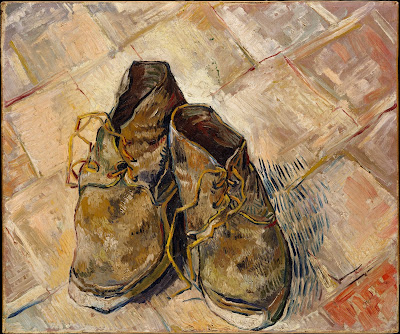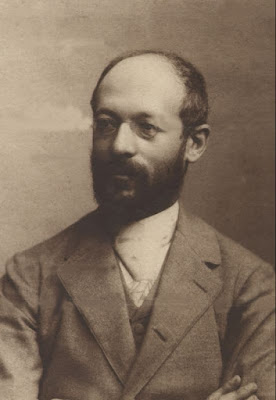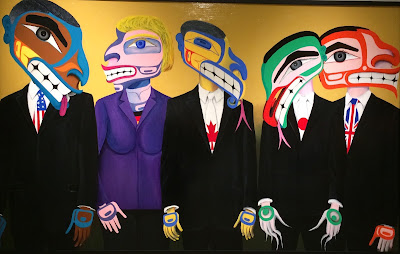I'm so excited by my discovery of Ernö Goldfinger's house at 2 Willow Road last week, which will be the case study for my third and longest chapter of my thesis. I went to visit it on Saturday and was blown away not only by the architecture of the house and by Goldfinger's furniture but also by the collection of modern art that was housed inside, which included works by: Bridget Riley, Max Ernst, Man Ray, Fernand Leger, Henry Moore and to my great interest Amédée Ozenfant, who was the art teacher of Goldfinger's wife Ursula in Paris. I'm so thrilled that my research has brought me to this house, which ties together so much of my thematic work on Loos, Le Corbusier, Mies van der Rohe, and Ozenfant of course and that here in London, I will have the opportunity to discover this house in great detail and the objects inside it, both the valuable art pieces and the trinkets Goldfinger brought back from holidays.
Can't stop thinking about the Foundations of Modern Art...
Words, images and documents by or collected by Jessica Schouela
Tuesday 30 August 2016
ARE WE REALLY SO MODERN? by Adam Kirsch
Interesting overview in The New Yorker of philosophy and asking fundamental questions about existence, God and modernity.
"One of the most popular names for the unexplainable is God: God is how we answer questions about creation and purpose that we can’t answer in any other way. Certainly, both Descartes and Leibniz relied on God to balance the equation of the universe. Without him, they believed, the world did not make sense. The philosophers’ God was not necessarily identical to the God of Christianity, but he had some reassuringly familiar attributes, such as beneficence and providential oversight of the world."
Tuesday 23 August 2016
Two quotes from Heidegger's "The Origin of the Work of Art"
"The work of art makes publicly known something other than itself, it manifests something other; it is an allegory. In the artwork, something other is brought into conjunction with the thing that is made… the work is a symbol."
"What could be easier than allowing a being to be just what it is? Or is it rather that this task brings us to what is the most difficult, particularly when such an intention – to allow a being to be as it is – is the opposite of that indifference which turns its back on beings in favour of an unexamined concept of being? We must return to the being and think about it itself in its being. At the same time, however, we must allow it to rest in its own nature."

"What could be easier than allowing a being to be just what it is? Or is it rather that this task brings us to what is the most difficult, particularly when such an intention – to allow a being to be as it is – is the opposite of that indifference which turns its back on beings in favour of an unexamined concept of being? We must return to the being and think about it itself in its being. At the same time, however, we must allow it to rest in its own nature."

Van Gogh (1888)
Two quotes from Georg Simmel's "Fashion"
Regarding the soul’s
duality: "the physiological basis of our being gives
the first hint, for we discover that human nature requires motion and repose,
receptiveness and productivity – a masculine and a feminine principle are
united in every human being. This type of duality applied to our spiritual
nature causes the latter to be guided by the striving towards generalization on
the one hand, and on the other by the desire to describe the single, special
element. Thus generalization gives rest to the soul, whereas specialization
permits it to move from example to example; and the same is true in the world
of feeling. On the one hand we seek peaceful surrender to men and things, on
the other an energetic activity with respect to both."
"Movement, time, rhythm of the gestures,
are all undoubtedly influenced largely by what is worn: similarly dressed
persons exhibit relative similarity in their actions. This is of especial value
in modern life with its individualistic diffusion, while in the case of
primitive races the effect produced is directed within and is therefore not
dependent upon changes of fashion. Among primitive races fashions will be less
numerous and more stable because the need of new impressions and forms of life,
quite apart from their social effect, is far less pressing."

Tuesday 2 August 2016
Lawrence Paul Yuxweluptun
I was completely blown away by the exhibition 'Unceded Territories', a solo show of Lawrence Paul Yuxweluptun at the Museum of Anthropology at UBC in Vancouver. I first came about his work in a class I took during my undergraduate studies at McGill on contemporary Canadian Aboriginal art. The work that I was taught is 'An Indian Act: Shooting the Indian Act', a performance from 1997 wherein Yuxweluptun shoots the Indian Act, a federal law from 1876 that remains active today limiting the rights aboriginal peoples in Canada. What remains from the performance are the rifles used for the shooting and the document having endured several bullets.
Getting the chance to look at some of his paintings, I was so impressed by his visual eloquence in his efforts to reclaim Aboriginal aesthetics within a modernist canon. Making use of traditions in Pop art and abstract painting (he plays with the tradition of white on white paintings, beginning with Malevich and then continued by Rauschenberg, Jasper Johns, Robert Ryman), Yuxweluptun becomes the agent who appropriates western culture to serve activist pursuits on the ways in which the west has failed many.
He is the maker and no longer the subject and repurposes the techniques and history of western art to fulfill he own messages. Addressing a multitude of urgent issues such as the residential schools in Canada's ugly history, oil spills in the ocean and power in today's politics, this exhibition was immense and instantiated thought and concern for world problems that have a bad habit of getting brushed over.
Subscribe to:
Posts (Atom)

